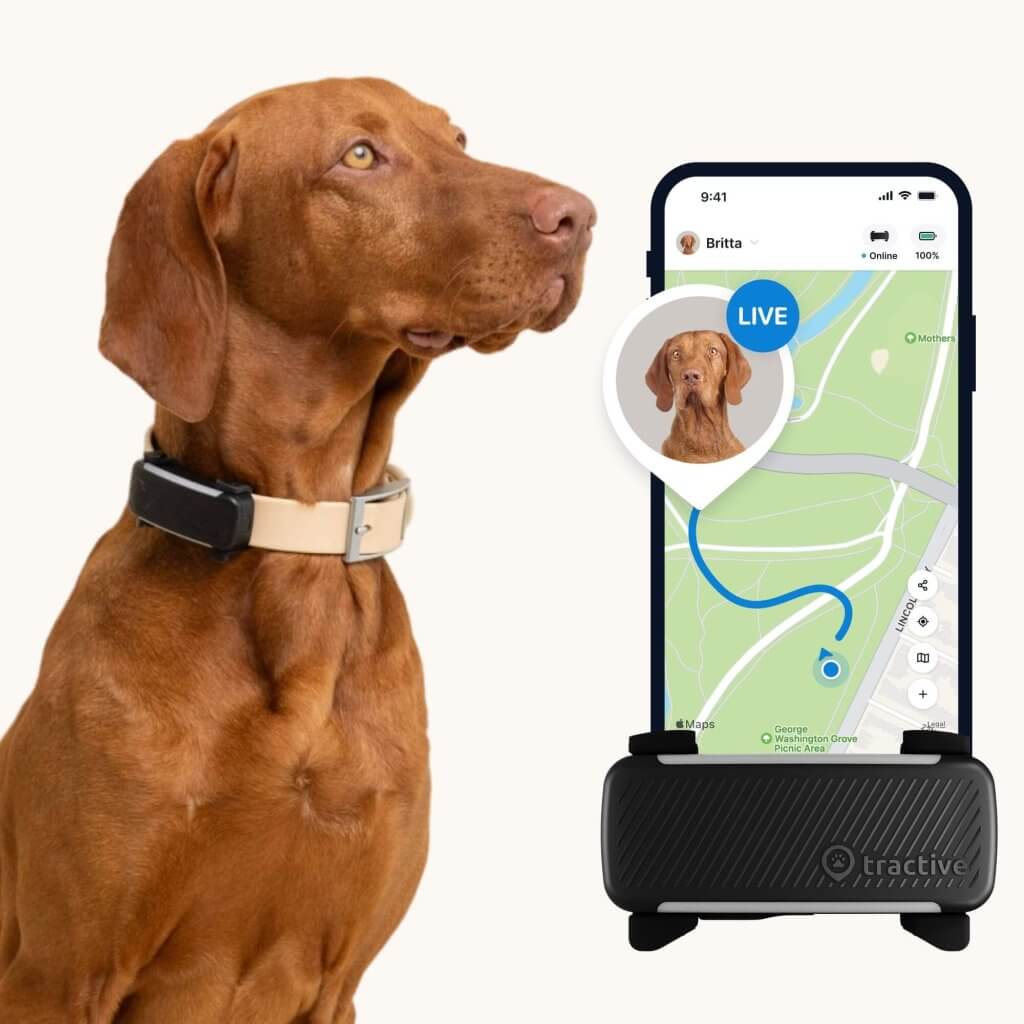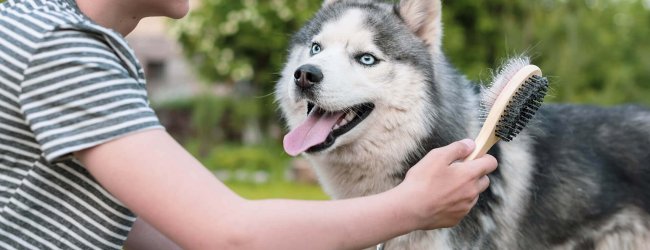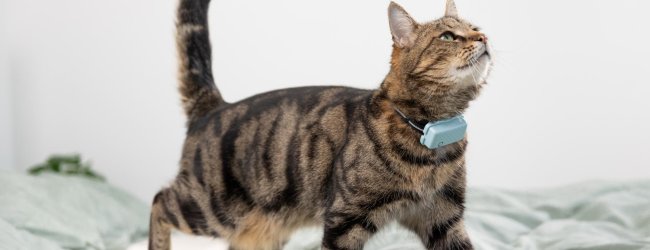Resource Guarding in Dogs: When Yours Is Extra Protective
Does your buddy tend to growl or snap when you take away their toys or clear away their food bowl? Sounds like a classic case of resource guarding in dogs. But why do they behave this way - and how do you manage it?

They might be the sweetest, good-est boy or girl ever – but if your buddy’s ever growled at you when you tried to clear away their toys or snapped at you when you approached their food bowl…it could be a sign of resource guarding in dogs. Here’s what it really is, why your dog might be doing it, and when it’s worth paying a bit more attention to their behavior. (Especially if they’re getting in the habit of hiding their “treasures” in odd places!)

Always know your buddy is healthy & safe
Read moreWhat exactly is resource guarding in dogs?
Resource guarding is when your dog feels the need to protect something they see as valuable. Which could include:
- Their toys
- Their food – especially if you’ve got multiple dogs or pets at home
- Their bed or sleeping area
- A favorite sitting area, like that one sofa or couch
- Favorite items, like socks and slippers
- And even “their” people – including you! (Or whoever their primary caregiver is, who we’re going to assume is…well, you.)
Is resource guarding always a cause for concern?
Not necessarily. Dogs are naturally pre-programmed to “protect” these resources. (Especially food.) Your dog might also have dropped some hints they’re getting protective much before they start growling or hiding. Like, for example:
- Staring at you pointedly
- Covering their toys or food bowl with their paws
- Trying to eat faster
- And in some cases, even hiding their treasures somewhere safe. (Like your backyard, under a bush, or even in some risky hiding spots indoors and outdoors.)
To your dog, guarding what’s “theirs” isn’t a “bad” or “wrong” behavior. Though it can be a cause for concern if it’s persistent or escalating to aggressive behavior.
Why do dogs “guard” their resources?
Most dogs display some of this behavior at some point in their lives. Meaning, you might find them doing it as a result of:
- Their natural instincts.
Your dog’s wild ancestors need to protect their food and territory to survive. Your furry buddy isn’t much different, no matter how much you’re spoiling them. - Your dog’s breeding history.
Dogs that were historically bred as guard dogs (like Shepherds) or herding dogs (like Collies) or “gun dogs” (like Retrievers) might be more protective than others. - A change in their routine or environment.
Any change can be stressful – so resource guarding can help your dog feel more in control. - Fear & anxiety.
Dogs that are prone to anxiety might guard their toys as a way of coping with something scary in their environment. Hiding behaviors are also a sign of anxiety – especially if your dog starts hoarding their items in unusual spots as a way to cope. - Negative past experiences.
Your dog might have had to compete with other dogs for food and space. Or they might have felt neglected, like not having enough toys to play with or a bed to sleep in. A lack of socialization also means they haven’t learned how to ‘behave’ around other dogs.
Even if your dog is in a safe, sane, predictable, pampered environment right now – old habits die hard. Helping them overcome these “survival” behaviors will take time and patience. (And separate feeding bowls and sleeping beds if you have multiple dogs!)
Else, it’s also a good idea to seek help from the shelter staff or rescue organization you adopted them from. Understanding your buddy’s history can help you figure out which situations they tend to get extra protective – and what steps you can take to wean them off this behavior.

Follow your dog anywhere
Get real-time location information, wherever they go. And find out when they try to make an escape, or just when they go somewhere they shouldn’t, with Virtual Fences.
How to wean your dog off their extra-protectiveness
Help your dog understand you’re not a threat
Here are a few training tips from the Battersea Dogs and Cats Home if your dog tends to growl when you approach them during mealtimes:
- As your dog nears the end of their meal, get close and drop some treats near their food bowl – and move away.
- Repeat the same steps a few times over the next couple of days.
- Gradually drop the treats closer to your dog’s food bowl.
- Don’t have treats at hand? You can also use some dry food kibble instead – placing small handfuls in your dog’s food bowl when they’ve finished eating.
- Once they’ve finished eating the kibble, approach and add another small amount to their bowl.
With time, this will help your dog anticipate your presence as “treats incoming!” Meaning, they’ll learn that you approaching them is a positive sign – and that they don’t need to guard their food around you.
Follow the same steps – i.e. approaching and dropping treats – if you find your dog resource guarding the most around toys or other favorite items, like socks or slippers.
Set some firm boundaries with friends & family
Let your friends and family members know it’s best not to approach your dog when they’re eating or chewing something. Likewise, it’s best not to withhold any toys (even playfully) from your dog, especially if these are items they feel extra protective around. You want to avoid any growling, barking, hiding, or aggressive behavior as a result of your buddy getting frustrated or annoyed.
Double down on your dog’s obedience training
One of the basic dog commands is “Drop it” or “Leave it.” This can help prevent your puppy from chewing on something dangerous (like an exposed wire) or your adult dog from snarfing up some leftovers from the sidewalk. A command like “Drop it” is way more effective than trying to wrestle something out of your dog’s mouth. (Which can only worsen their resource guarding – or make them think it’s a fun game of chase instead!)
Redirect your dog’s attention elsewhere
Some dogs do best when you address their resource guarding with an “item swap” or exchange. This will come in handy when you need to clear away their (empty) food bowls or tidy up a room full of toys. In this case, you essentially want to “distract” your dog from whatever they’re guarding. So you could:
- Drop some treats or a toy quite a bit of a distance away from where your dog’s sitting – but of course, within sight of them.
- This will make your dog move away from whatever they’re guarding, so you can safely clear it away.
- You could also get another family member or housemate to keep your dog busy in another room while you clear away their toys or other items.
If all these training tips don’t help – or your dog is responding aggressively – there’s nothing wrong with leaving some jobs to the pros. Get in touch with a professional dog behavior specialist or a training school nearby that can help you figure out how to best adapt your dog’s needs.



